How Black Women Are Redefining The Soft Life
From Hudson Valley to Martha’s Vineyard, meet five women swapping city living for healing, reclamation and peace.
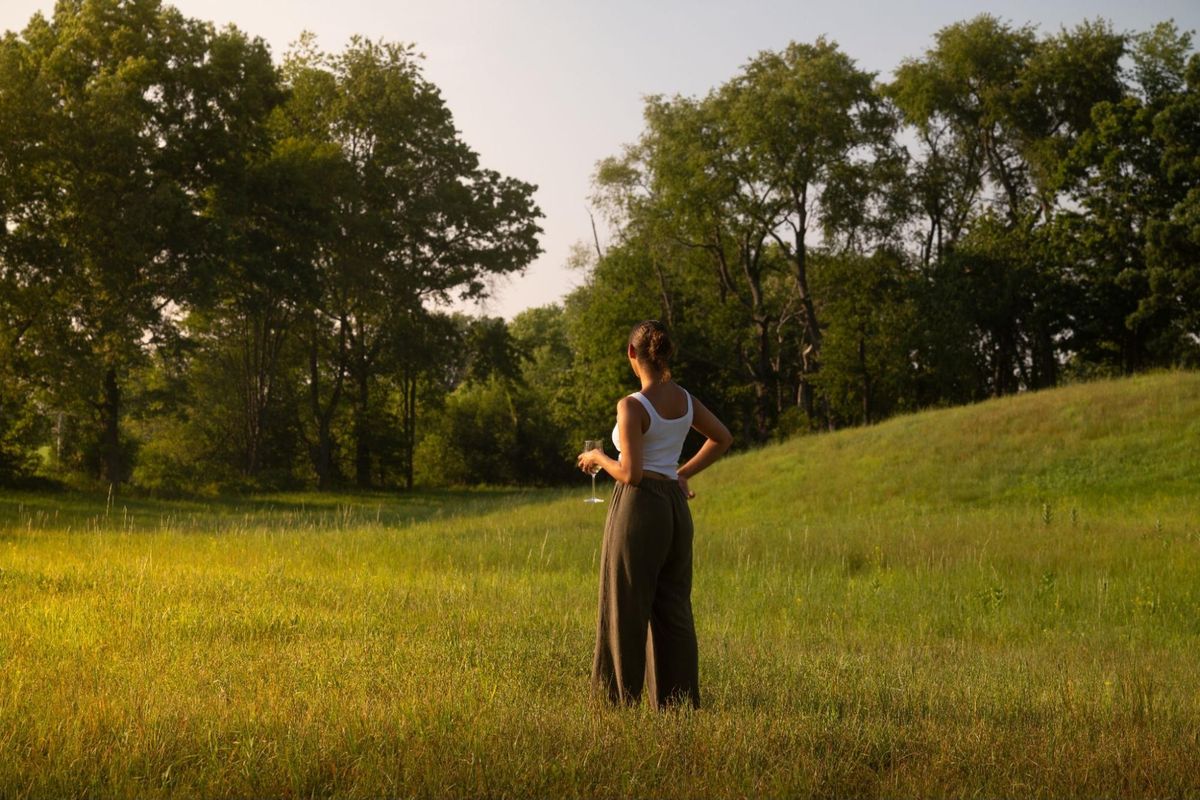
In Eye Diet, Sydney Gore breaks down the buzziest design and decor trends that are a visual feast.
During the pandemic, I found myself at a crossroads. As I watched herds of wealthy New Yorkers flee upstate, I wondered how much longer I too could withstand the horrors happening around me. Once I got laid off from the publication I was working for about three months in, I took that as permission to leave and packed my bags for the suburbs of South Jersey. I wound up staying with my parents in my childhood home from April to July, and for the first time ever I dreaded the idea of returning to my apartment in Manhattan. I had just turned 27 and felt like I was experiencing a delayed quarter life crisis of sorts.
One day, while I was spiraling about what my future looked like, the viral photo of Paula Sutton reading on the lawn of her English estate popped up on my screen. This was during what felt like the peak of the cottagecore trend and it was the first time that I had ever seen a Black woman centered in what had become a very whitewashed picture. At that moment, a seed had been planted, and my desire to reconnect with nature began to grow; it felt like something had been awakened inside of me and I was being called to return to the land. As the vibes continued to shift, I interrogated these feelings in conversation with other Black women who seemed to be experiencing the same train of thought.
Since then, I’ve yearned for a softer life—I want to be able to go outside and touch grass from the comfort of my own backyard instead of walking down the street to a public park. Perhaps this is common when you cross the bridge into your thirties, but I sensed a bigger shift was occurring amongst Black millennials specifically. When I found out that Solange Knowles bought a house in Nyack, New York, it felt like a confirmation.
Last year, I became entrenched in discourse about the modern Black migration. While reflecting on my own family history, I kept returning to the story of how my maternal grandmother followed her siblings from Alabama to New Jersey and never looked back. After I read Rooted: The American Legacy of Land Theft and the Modern Movement for Black Land Ownership and A Movement in Every Direction: A Great Migration Critical Reader, I wondered if I was missing out on the South, but I wasn’t fully sold on relocating to a region that felt so unfamiliar to me. There was something about the North that I felt drawn to, but I couldn’t put my finger on what exactly made it so appealing to me. As it turns out, I’m not the only one who’s been feeling called to the countryside.
Ahead, read stories from five Black women about their journeys to the a softer life in the countryside.
A Nervous System Reboot In Martha’s Vineyard
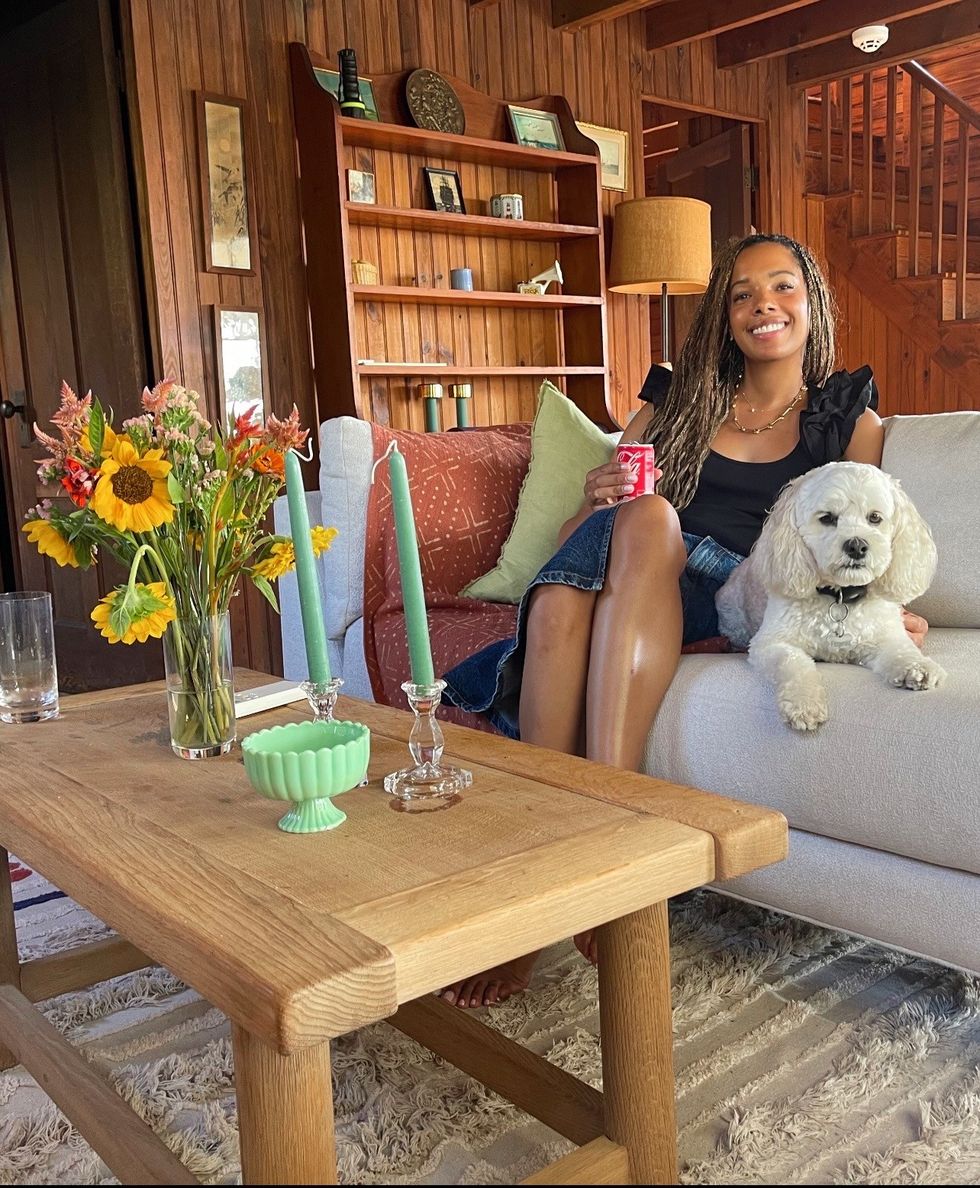
“I had the courage to create a life on my own that felt fulfilling to me,” Amanda Thigpen says about the experience of living in Martha’s Vineyard for nine months.
Amanda Thigpen
In 2020, Amanda Thigpen hit a breaking point. Still deep in the grief of losing her mother in 2014, the sudden demise of her romantic relationship seemed to provoke strong feelings of abandonment and repressed emotions. At the time, she felt stuck in a high-stress marketing role at a beauty company, and it felt like all signs were pointing toward leaving San Francisco. So, Thigpen headed back to the East Coast in 2021 with the hope of realigning her path. She landed a new job at a beauty company, and found a studio apartment in a high rise building with amenities in Downtown Brooklyn, but the vibes still felt off.
“The breakup and the move were catalysts to the years of the compounding effect of stress on my nervous system dealing with the pressure to perform,” she says. “I remember I was working in my kitchen and I couldn’t breathe—I had a panic attack, and I didn’t know what it was, and I went to urgent care.”
After returning from an eight-week sabbatical, Thigpen was overwhelmed with the nagging feeling that New York wasn’t where she was supposed to be in 2022. “After all the panic attacks and the mental health crisis, I was like ‘This cannot be what life is, it’s not sustainable,’” she recalls. While reflecting on where she felt most like herself, the answer became obvious: Martha’s Vineyard.
Thigpen’s family had been renting on the island for generations and it always felt like her safe place. After securing a job that included free housing, she loaded up her car and drove to the island. While her decision wasn’t initially met with support from her family, that didn’t deter Thigpen from making it work for nine months. She and her dog, Fitz stayed in a 1920s wooden beach cottage in Chilmark for about three months before moving into another cottage on Vineyard Haven.
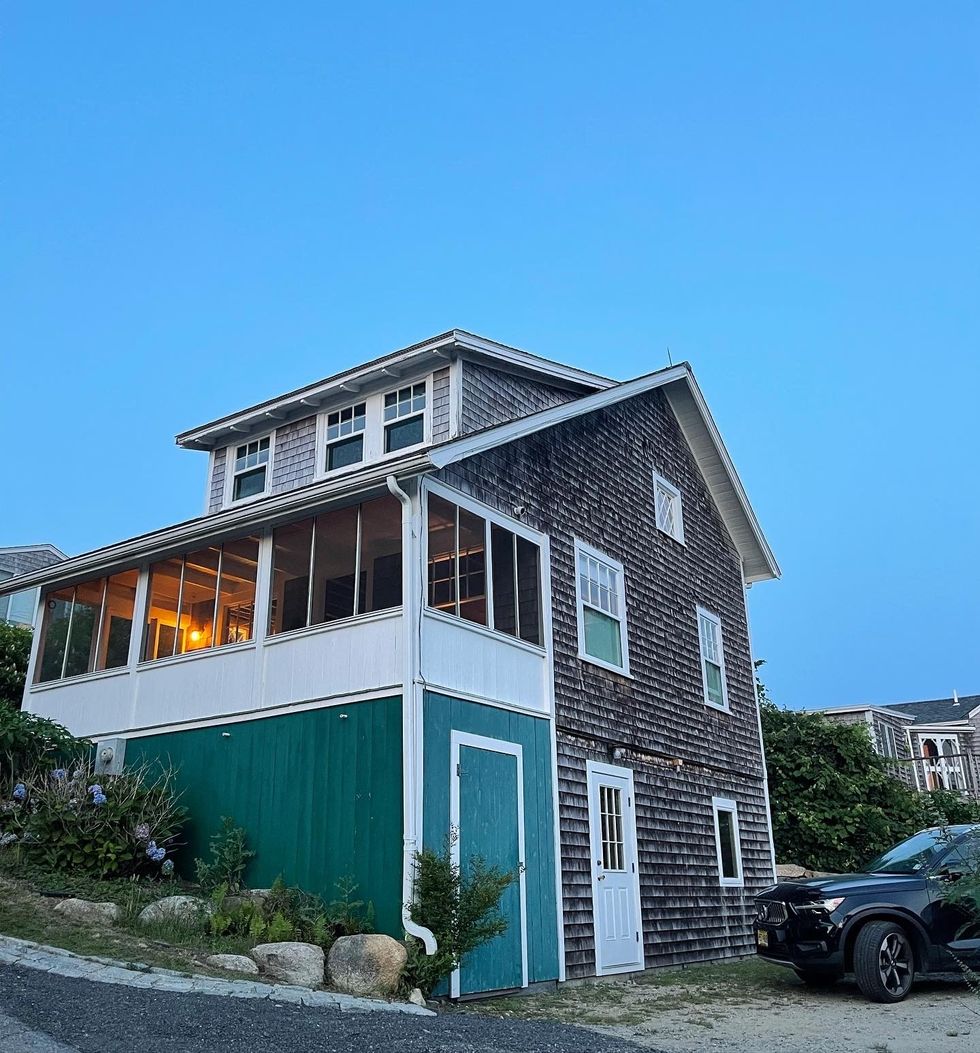
Amanda Thigpen
Martha’s Vineyard is upheld as a sanctuary for the Black elite, especially once the Obamas joined the scene, but that representation isn’t why Thigpen wanted to live there. During the off-season, she learned that the demographics couldn’t be more different on the island as she interacted with local fishermen, chefs, teachers, dog walkers, and massage therapists. “It was never like ‘This is a place I go to to connect with other like-minded Black people.’ This is my special place where I go with my family,” she says. “I’m like ‘Are you kind? Are you aligned?’ I’m a Black woman, but I don’t allow that personal identification, and the identification of the world, to determine my comfort and my environment.”
Although Thigpen has since moved to the Upper East Side, it wasn’t because she couldn’t handle the solitude of the island. Living in Martha’s Vineyard was the nervous system reboot she needed to get her life back on track and move forward into the future. “Figuring out who you are and what you want your life to look like is the end game,” she says. “Trust in your life to navigate the uncertainty and what will unfold in front of you. Have the broad strokes of what you want your life to look like, but let go of the reins.”
Making A Self-Investment In Dutchess County
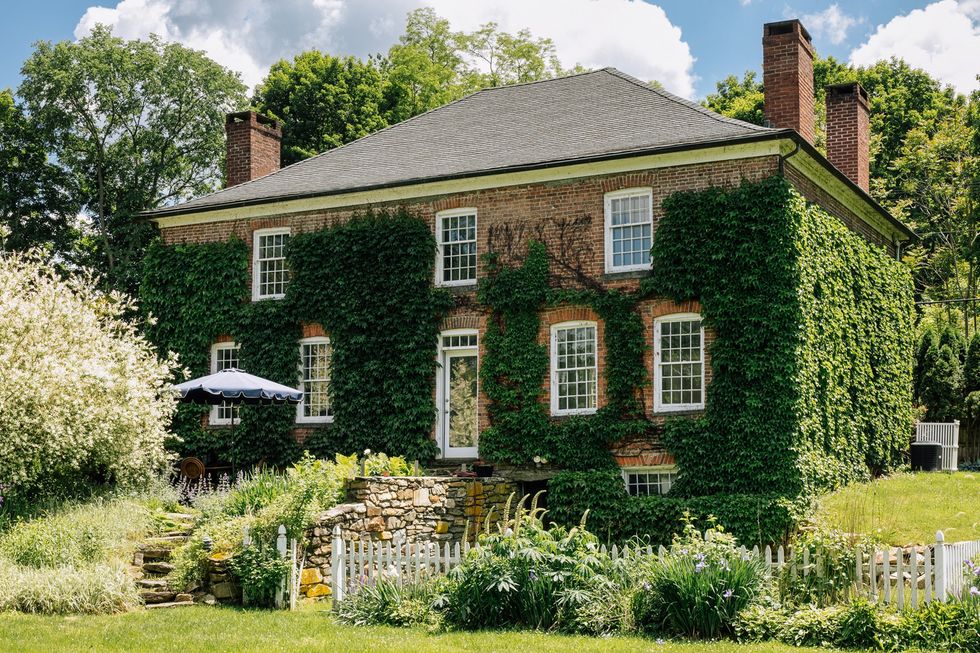
“When you buy a house, especially as a single woman, people are like, ‘Oh my gosh, you must feel so proud,’” Alyse Archer-Coité says about the Noxon House. “I don’t really feel proud of myself for owning it, but I feel proud of myself for being able to keep this house in the world—I’m impressed that it has withstood my ineptitude in terms of what I know about managing and owning and caring for an old home.”
Gabriel Zimmer of Catskill Image
When Alyse Archer-Coité fantasized about homeownership, she always thought she would purchase a property somewhere warm and exotic. But when the design researcher found a charming brick house covered in ivy in Dutchess County, she was sold on the upstate lifestyle. In 2020, she fully committed to the idea with the purchase of a 3,780-square-foot property known as The Noxon House. Built in 1770, the traditional Dutch colonial house still maintained many of its original features, like wide plank floorboards, colonial grid windows, and multiple fireplaces on every floor.
Even though Archer-Coité found that she didn’t share the same sociopolitical views as her neighbors, respectfully engaging in conversations with them about complex issues expanded her mindset. “I was challenged in a lot of my pre-existing beliefs and so were they,” she explains. “They’re the kinds of conversations that are really important and necessary to be having, and I’m grateful that I was able to have them; not that it’s changed so much in the world, but it has changed my little corner of the world, and at this point that’s all I can aspire to do.”
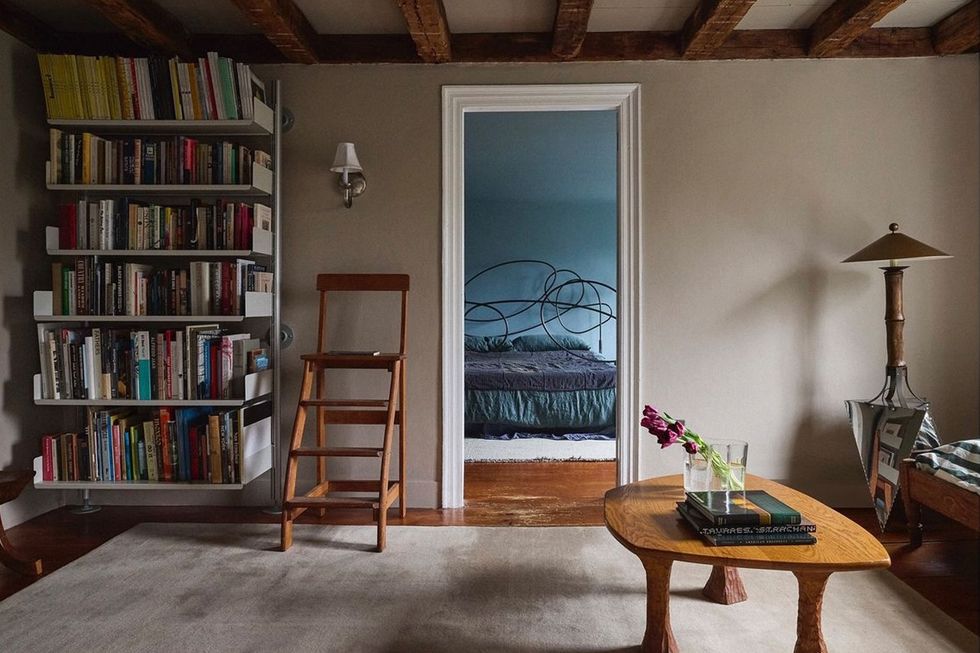
“I bought a piano so I could learn piano there. I built a home gym so I could lose the weight that I gained during COVID. I built a library for myself so I could read and research on the floor, which is where I love to do that,” Archer-Coité says. “That’s what a home is; it’s a place to grow you, even if it’s not forever.”
Maxx Basso
The experience of living in the countryside also shifted her perception of what is necessary to have in order to justify taking up so much space. “I’m a single person, I’m unmarried, I have no children, I have no pets anymore, how can I justify having this much square footage without having those things? When I bought it, I thought, ‘If you build it, they will come,’ like all these things will filter into my life and I’ll be ready,” Archer-Coité says. “I felt like buying the home was an investment in those things being a necessity—the home can be filled with me and my friends’ laughter, and not necessarily the pitter patter of children’s feet, and that doesn’t diminish the importance of that. It doesn’t diminish the meaning of home.”
While buying a house is one of the scariest investments that Archer-Coité has ever made in her life, it ultimately allowed her to invest in her future. For her, homeownership has been less about legacy and more about investing in a repository for creating memories. “You don’t really own anything,” she adds. “All of us are stewards of these homes that we live in… I love the house, but I don’t have a feeling of real ownership over it; I have more of a feeling of duty toward it, and that is a really unique and unexpected feeling to have.”
Seeking Greener Pastures In Hudson Valley
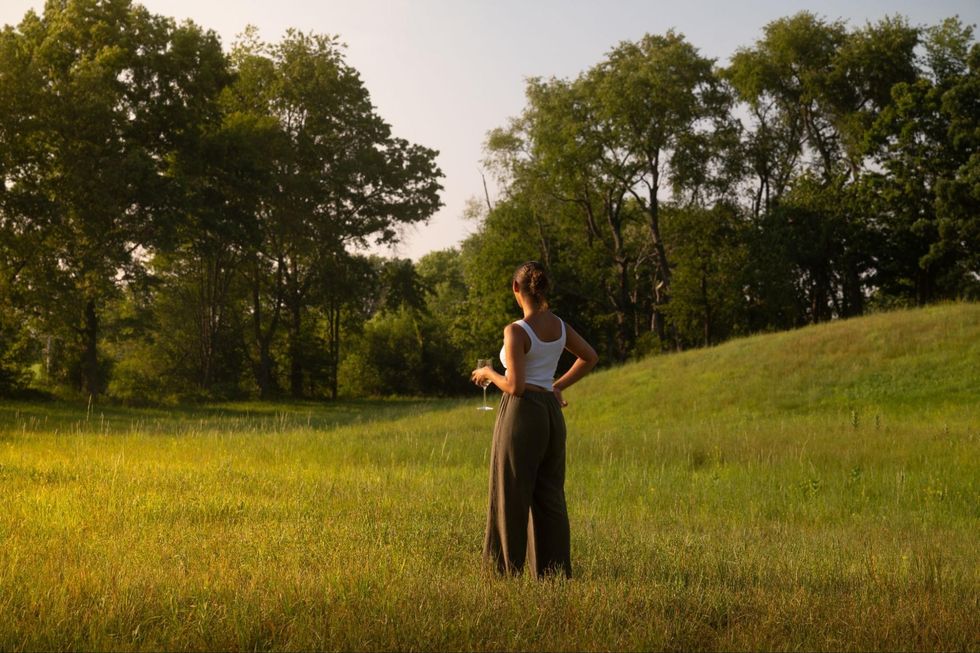
“I was like, ‘I know I see this for myself, that one day I will be somebody who owns land,’” Taryn Delanie Smith says. “I feel like I’m reclaiming something.”
Travis Smith
Taryn Delanie Smith wasn’t expecting to buy a house in 2025. The 28-year-old claims that she’s always had the property bug—her dream was to have a pied-à-terre in the city and a historic house somewhere upstate—but first she had to take care of $200,000 in student loans. Once that debt was fully paid off in 2024, Smith began entertaining the idea of house hunting with her husband, Alec Castillo, that fall, assuming the process would take them at least two years. It felt like a faraway goal to save for her late thirties.
But then on Christmas Eve, she found a Zillow listing for a 1791 stone manor sitting on 3.7 acres in Hudson Valley. “I viewed it on January 4 and I put an offer down sitting in the car in front of the house,” Smith recalls. “They accepted my offer with no negotiation, so the ball started rolling faster than I could stop it, but I knew this was the house.”
Coming from a financially insecure background, Smith admits that she has a lot of trauma with money. Even with having a husband to share the financial burden, Smith completely underestimated the closing costs for buying a house, and her savings took a much bigger hit than she anticipated. Although it was a huge risk, it was worth taking, and Smith’s financial advisor is guiding them every step of the way. “When the opportunity finally presented itself, I was like, ‘I’m allowed to fund my dreams, even if they’re fanciful,’” she says.
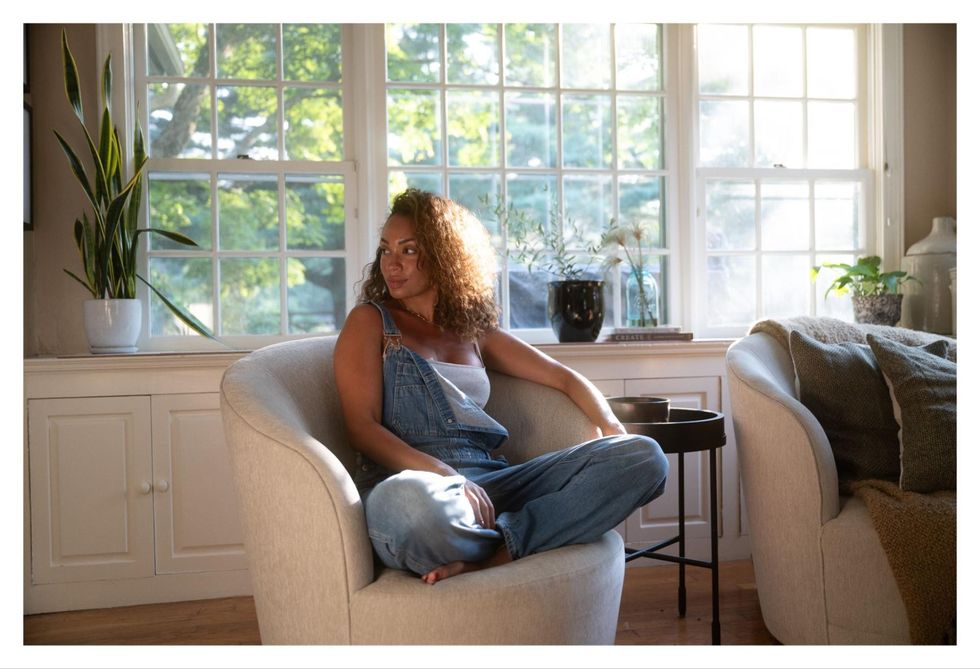
At the moment, Smith is most excited about putting a pastoral landscape in the foyer with a beautiful bucolic mirror, and raising chickens in the backyard. “This is the labor of love that my husband and I have taken on and it’s so rewarding,” she says.
Travis Smith
Smith currently resides in a blue collar town full of “regular working people.” Although she was hypersensitive to intrusive comments from neighbors at first, their acts of kindness to welcome her and her husband to the neighborhood once they moved in this past July made her reconsider. Now that they’re all better acquainted, she hasn’t hesitated to use them as resources for local recommendations like contractors, plumbers, exterminators, and other small businesses. “If you’re going to live in an upstate community, you better be okay with people being in your business,” she adds. “You have to take an interest.”
Beyond the work of stewarding a house, Smith has learned that there’s still work to be done on herself. For example, the creator and comedian noticed her lack of patience for getting things done and skipping to the end of the process. “I’ve really started to take the house, and living out here, as a metaphor for this chapter of my life that I’m in,” she explains. “The house is forcing me to slow down, and I think about the fact that like ‘You didn’t move to a 200-year-old house for it to be easy and perfect and beautiful and done. You purposely moved into this space because you wanted to build it yourself. You wanted to cultivate it. You wanted to take the time with it.’”
Now that the couple has bid adieu to their life on the Upper West Side, all of their funds are going toward renovating the fixer upper. So far, they’ve checked off replacing the septic tanks and water heaters, led paint remediation, chimney repairs, and mold cleaning from the list. (Humanely evicting bats from the attic is a work in progress.) Smith has been candidly documenting this new chapter as “The Unlikely Countrywoman” on Instagram and YouTube.
Roughly two months after settling in at the manor, Smith feels like she’s reclaiming something bigger than herself. “I can’t take it with me when I die, so this is something that I can steward and take care of that will outlive me if I do it right,” she says. “The idea that I’m taking care of something and investing into something that will outlive me is the best investment that I could make at this point in my life.”
Reclaiming The Land In The Catskills
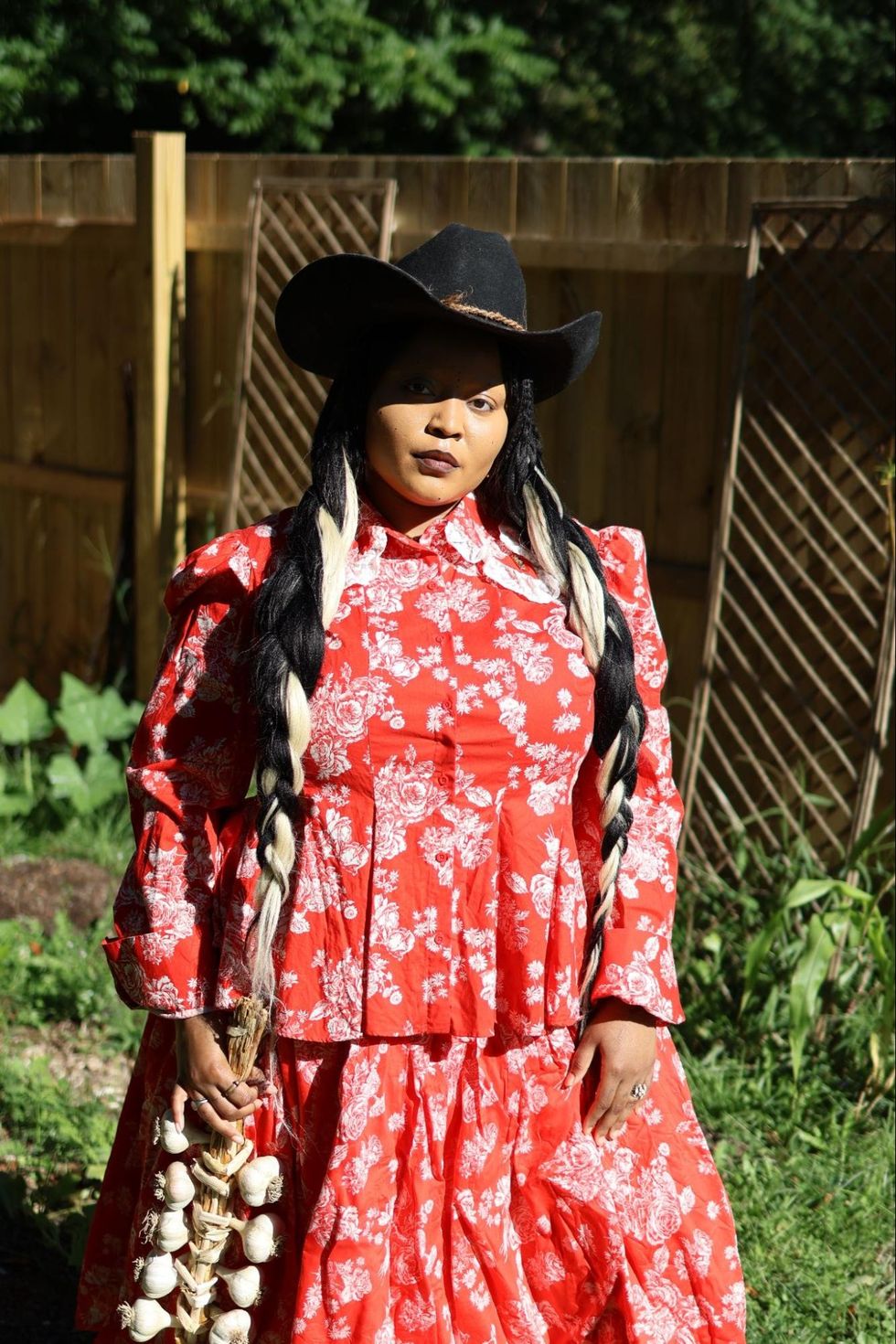
“The only thing that I’ve ever learned from childhood, from my ancestors, from my elders who are still alive, is the one thing they wish they always had was their land back,” Grey Prnce says. “I was like, ‘I’m gonna go get it.’”
Grey Prnce
Grey Prnce grew up in a very pro-Black indigenous household where the only goal to work toward was sovereignty through land ownership. “Everything that was instilled in me from birth was to get our land back, buy our land back, and invest in land,” she says. “I was never encouraged to buy a nice car or fancy clothes, it was always about land.” Since she was a teenager, the Zillennial has been pocketing every dollar she’s earned into a land savings accounts.
When the pandemic turned the whole world upside down, she and her husband, Grayson, were living in Los Angeles. The 28-year-old artist recalls having nightmares of a natural disaster happening specifically in their neighborhood and the urgency to leave accelerated in the midst of this internal consciousness shift. “I could not find a reason to stay,” Grey remembers. “I think people overlook what happened in 2020 because it was traumatizing—as someone who has CPTSD, my brain was like ‘Shut it down, forget about it.’ But that’s not normal; a martial law, a global pandemic, and a race war within a couple of months.”
The couple was deciding between Mexico, Canada, and Upstate New York; somewhere where they weren’t in danger of water rising or fires burning. Grey was adamant about going toward the mountains, trusting in the lineage of her Appalachian ancestry, so they headed toward Hudson Valley in 2024. (The paternal side of her family is Blackfoot.) After renting a friend’s house for seven months and rebuilding their savings, the couple successfully purchased a property on a half acre of land in the Catskills. Grey views this life accomplishment as karmic injustice.
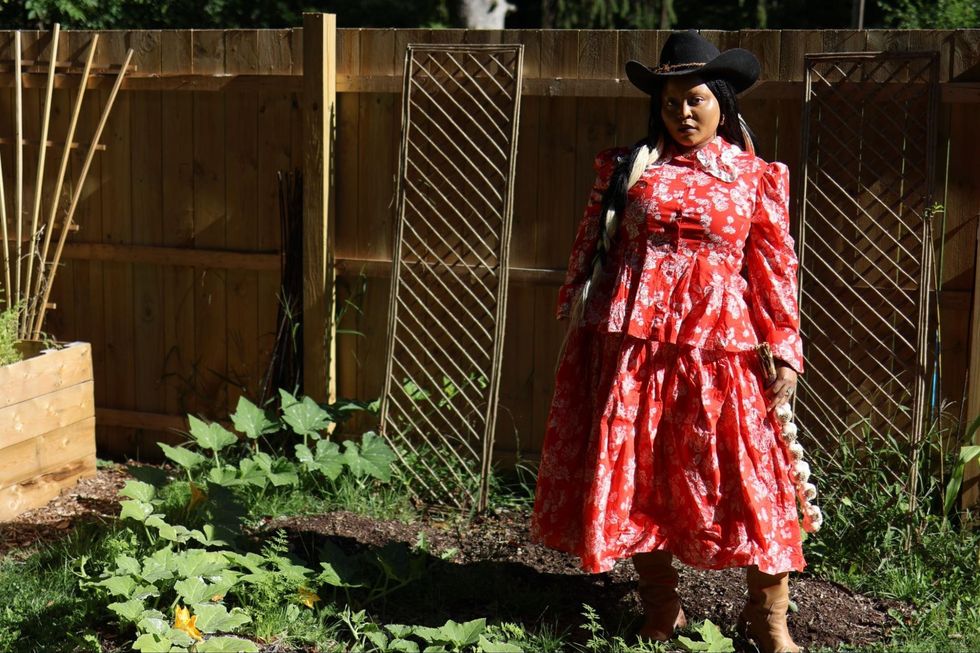
Grey Prnce
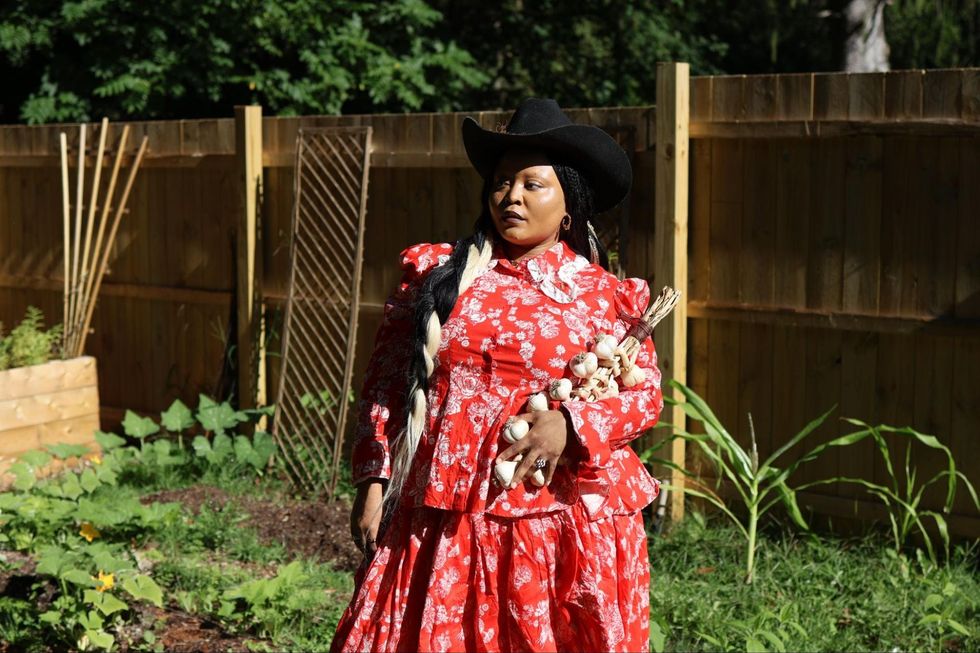
Grey Prnce
Following a year-long renovation, Grey and Grayson were finally able to move into the house this past January. As a Black Indigenous woman who is married to a white trans man from Idaho, she expected to deal with some microaggressions. But instead of dealing with racism, she’s been surprised to experience classism from some of the locals. “To be honest, the most pushback we’ve gotten—because people will never say a gay or racial slur to our faces—is the fact that our property was the most expensive one on the block,” Grey says. “They treat us like we’re gentrifiers.”
When Grey isn’t busy churning butter from scratch and growing food in the garden, the self-taught homesteader is strategizing about the community storefront she plans to open on the property someday. “This generation of Black people, specifically in this country, are the answer to a lot of old prayers, and that will be met with resistance, no matter what way you cut dice and slice it,” she says. “If there’s one thing I’ve seen so far with all the Black people buying land and homes, it’s that high risk has a very high reward because it fixes something energetically… Answer the calling.”
Building A Future In Columbia County
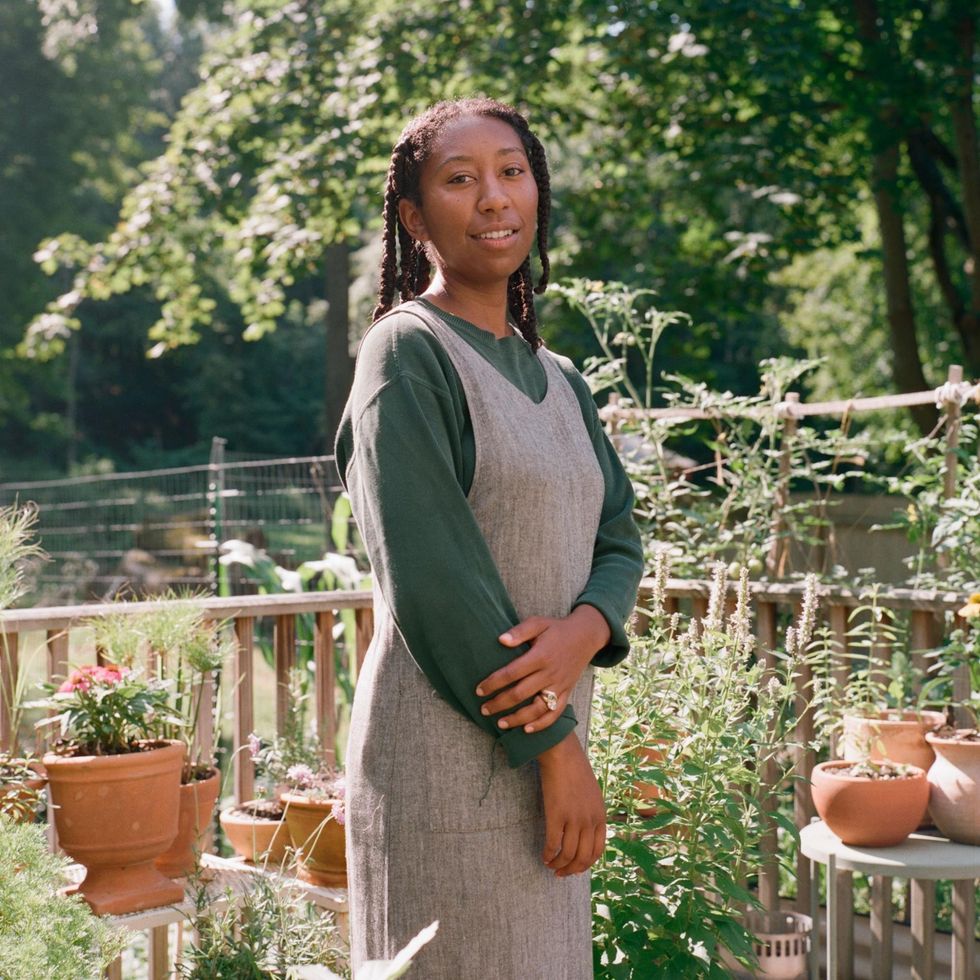
“There are things that the house needs, but the great thing about owning a property is you really get a sense of what we want to do with the house and how we want to occupy it over the many years to come,” says Wofford.
Trinity Mouzon Wofford
For Trinity Mouzon Wofford, author of Eating at Home: The Nourishing Practice of Everyday Cooking, moving to Upstate New York was a return to her roots. She and her husband, Issey Kobori-Hotchkiss, both grew up in Saratoga Springs and left to study at New York University. After graduating in 2015, the couple moved to Brooklyn where they would spend the next five years growing their superfood business, Golde. While the brand was still in its infancy, the couple briefly left Bushwick (now known as East Williamsburg) for South Glens Falls, NY, where they stayed in Wofford’s mother’s house, and then signed a lease for a two-bedroom apartment in Bed-Stuy six months later.
Wofford was loving the sense of community that they cultivated in the neighborhood, but everything changed in 2020. “There was a really dark emotional core that was sort of seeping out,” she recalls. “There was this moment of Issey and I being in our apartment, which we loved so dearly, and sitting in our bedroom and looking at each other and saying, ‘It’s time to go.’” They grabbed their stuff, paid their rent, and headed to Kobori-Hotchkiss’s childhood home not knowing when they would be back.
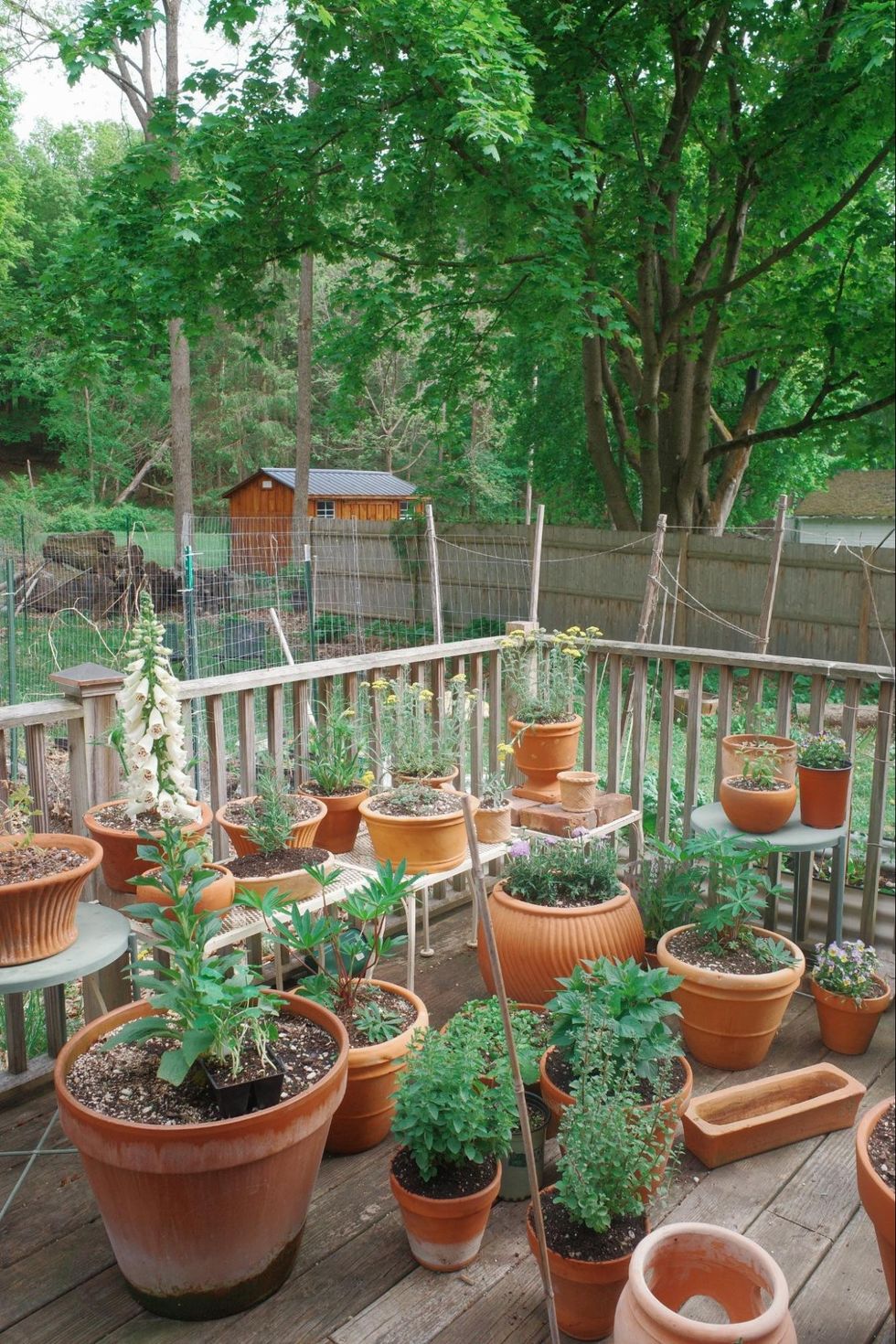
Trinity Mouzon Wofford
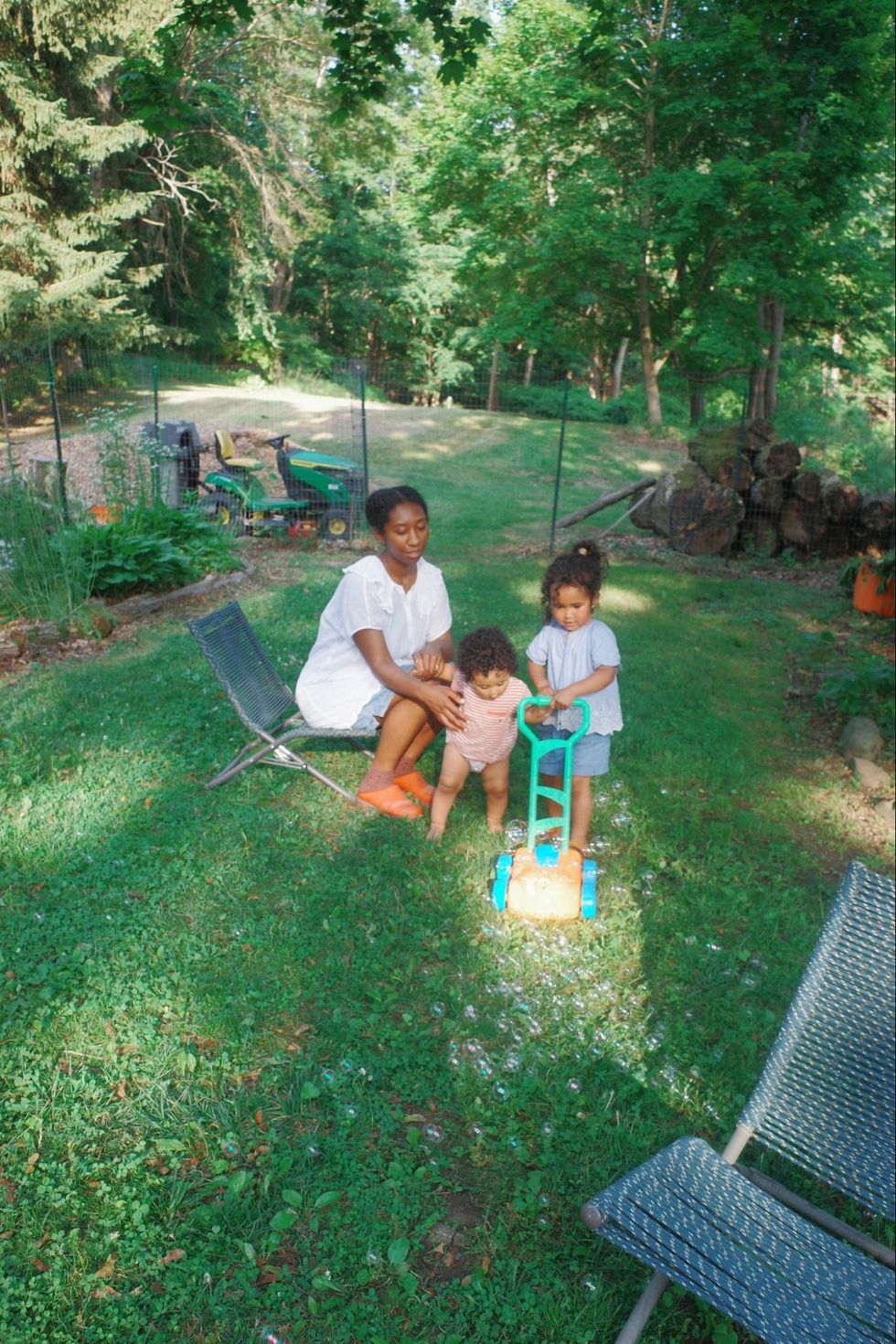
Trinity Mouzon Wofford
The couple eventually returned in 2021 to collect the rest of their belongings and confirmed that they wouldn’t resign their lease. “I was sort of hoping that I would walk into the apartment and go, ‘Oh my gosh, I’m home,’ but it was like getting lunch with an ex,” she says. Now that they had more financial security from a thriving business, the couple could consider making other investments. Wofford noticed that interest rates were lower on houses in Hudson Valley and after casting a wide net, she and Kobori-Hotchkiss eventually closed on a 2,500-square-foot house in Columbia County that October.
There’s a lot of history within the walls of their 1865 Victorian house, but Wofford is already making plenty of new memories. Both of her daughters were born at home—Ruby arrived in 2022 followed by Maia in 2024—so all of their time as a family is attached to it. “The girls were born here, but it’s also where we’ve watched them grow up,” she adds. “All of my sweet memories as a new mom are tied to this place.” The entrepreneur and author has also appreciated having an extended timeline to really live in the house and figure out what her family needs from it along the way. "In general, this is a place where you walk down the street and you run into people. You’re waving at cars and it feels so human to be known that way,” Wofford says. “There was a time where BedStuy felt like that to me, but what I started to feel at a certain point in the city was it became harder and harder to access that privilege of being known and feeling looked out for.”
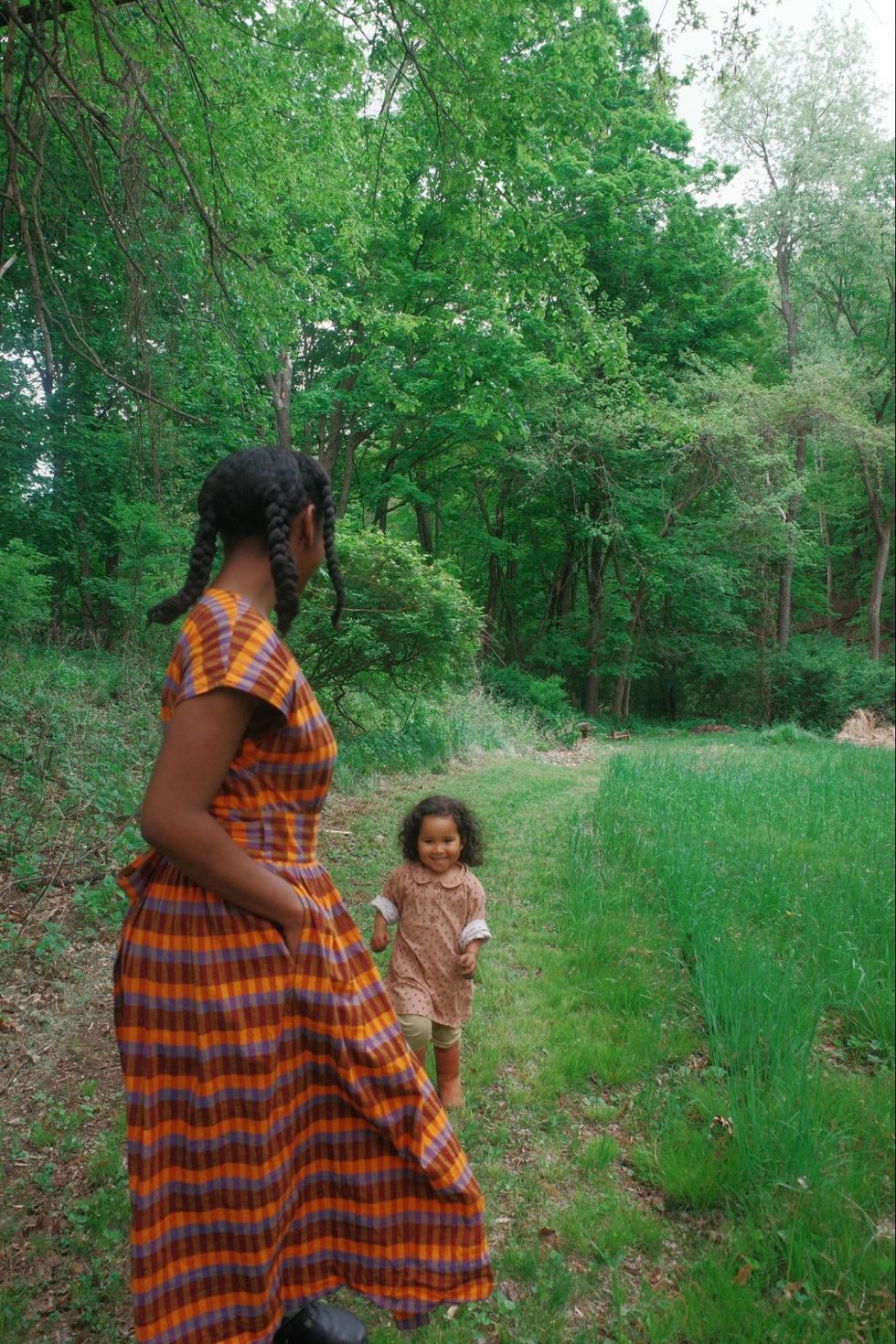
“When we closed on the house, I was pregnant with our first kid, but I didn’t know it and the house worked out perfectly that way,” she says. “It’s also been interesting, as our family has grown, figuring out how we are using these spaces and how we think it might change. I have dreams of very substantially shifting the layout of most of the upstairs, but that’s a big project. I don’t know when we’ll do it, but it’s nice to not have that sense of needing to accomplish it with any urgency.’”
Instead of falling victim to “the conviction in separateness” that deters so many people from considering rural environments, Wofford places value in diversity of perspective. For her, there’s nothing more affirming than raising a family in a place where she has a strong sense of connection and community. “We have neighbors that we can trade with—we’ll make fresh bread and trade it for the things that they’re growing in their garden,” she says. “I think that is a really ancient form of existence that we all could really benefit from tapping into whether we’re in great metropolises of the world or more in the back country.”




